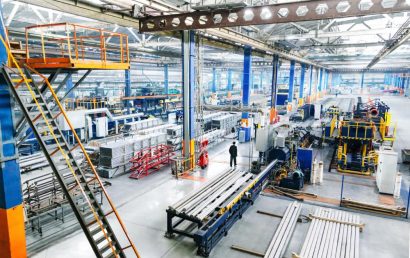In today’s demanding industrial landscape, enhancing the durability and performance of components is crucial for maintaining operational efficiency and reducing maintenance costs. High-Velocity Oxy-Fuel (HVOF) coating technology has become a cornerstone in achieving these goals. By providing exceptional wear resistance, corrosion protection, and thermal stability, HVOF coatings have revolutionized several industries. This post explores the top industries benefiting from HVOF coating applications and recent material advances that are pushing the boundaries of this technology.
The Fundamentals of HVOF Coating Technology
HVOF coating technology involves the combustion of fuel (such as kerosene or hydrogen) with oxygen to produce a high-temperature, high-velocity gas stream. This stream accelerates powder particles to supersonic speeds, which then impact the substrate to form a dense, cohesive coating. The key characteristics of HVOF coatings include:
- High Density and Low Porosity: Ensures superior resistance to wear and corrosion.
- Strong Adhesion: Provides robust bonding to the substrate, enhancing durability.
- Smooth Finish: Creates a uniform and smooth coating surface, which is crucial for reducing friction and wear.
Industries Reaping the Benefits of HVOF Coatings
- Aerospace Industry
The aerospace industry demands materials that can withstand extreme conditions, including high temperatures, friction, and corrosive environments. HVOF coatings are pivotal in this sector due to their ability to enhance the performance and lifespan of critical components.
- Turbine Blades: HVOF coatings protect against high-temperature oxidation and wear, significantly extending the service life of turbine blades.
- Landing Gear: Coatings such as WC-Co provide exceptional wear resistance, ensuring the durability of landing gear components under extreme mechanical stresses.
- Oil and Gas Industry
In the oil and gas sector, components are exposed to harsh environments that can cause rapid wear and corrosion. HVOF coatings offer a solution to these challenges, improving the reliability and longevity of equipment.
- Drill Bits and Downhole Tools: Tungsten carbide coatings enhance wear resistance, reducing the frequency of tool replacements and downtime.
- Pipelines and Valves: Nickel-based coatings protect against corrosive fluids and high-pressure conditions, ensuring the integrity of pipelines and valves.
- Power Generation
Power generation facilities, including nuclear, coal, and gas power plants, benefit from HVOF coatings due to their ability to withstand high temperatures and erosive conditions.
- Turbine Components: HVOF coatings such as Cr3C2-NiCr provide thermal and corrosion resistance, crucial for the efficiency and longevity of turbine components.
- Boiler Tubes: Coatings protect boiler tubes from high-temperature oxidation and corrosion, maintaining efficiency and reducing maintenance costs.
- Automotive Industry
The automotive industry utilizes HVOF coatings to enhance the performance and durability of various components, leading to improved vehicle efficiency and longevity.
- Engine Components: Coatings on piston rings and cylinder liners reduce friction and wear, improving engine performance and lifespan.
- Exhaust Systems: High-temperature resistant coatings protect exhaust components from thermal degradation and corrosion.
- Manufacturing and Machinery
In the manufacturing sector, machinery components are subject to significant wear and tear. HVOF coatings play a crucial role in extending the service life of these components, thereby improving operational efficiency and reducing downtime.
- Industrial Rollers: Coatings provide wear and corrosion resistance, ensuring smooth and efficient operation.
- Cutting Tools: Tungsten carbide coatings enhance the hardness and durability of cutting tools, leading to improved cutting performance and tool longevity.
Material Advances in HVOF Coatings
Recent advancements in material science have further enhanced the capabilities of HVOF coatings, enabling even greater performance and durability.
- Nanostructured Coatings
Nanostructured coatings incorporate nanoparticles into the HVOF process, resulting in coatings with superior hardness, toughness, and wear resistance. These coatings offer enhanced performance for critical applications in aerospace, automotive, and other demanding industries.
- Hybrid Coating Systems
Combining HVOF with other thermal spray techniques, such as plasma spraying, can create multilayered coatings with enhanced properties. These hybrid systems offer improved performance in terms of wear resistance, thermal stability, and corrosion protection.
- Advanced Carbide Composites
New carbide composites, such as WC-CoCr and WC-Ni, provide improved corrosion resistance and mechanical properties compared to traditional tungsten carbide coatings. These materials are particularly beneficial for applications in harsh chemical environments and high-stress conditions.
- High-Entropy Alloys
High-entropy alloys (HEAs) are a new class of materials that offer excellent mechanical properties and thermal stability. Incorporating HEAs into HVOF coatings can provide enhanced performance for applications requiring extreme durability and resistance to high temperatures and corrosive environments.
Conclusion
HVOF coating technology is transforming a wide range of industries by providing exceptional protection against wear, corrosion, and thermal degradation. As material advances continue to push the boundaries of what is possible, the applications and benefits of HVOF coatings will only expand. From aerospace to automotive, the power generation to manufacturing, HVOF coatings are a vital tool for enhancing the performance, durability, and efficiency of critical components in some of the most demanding environments.




